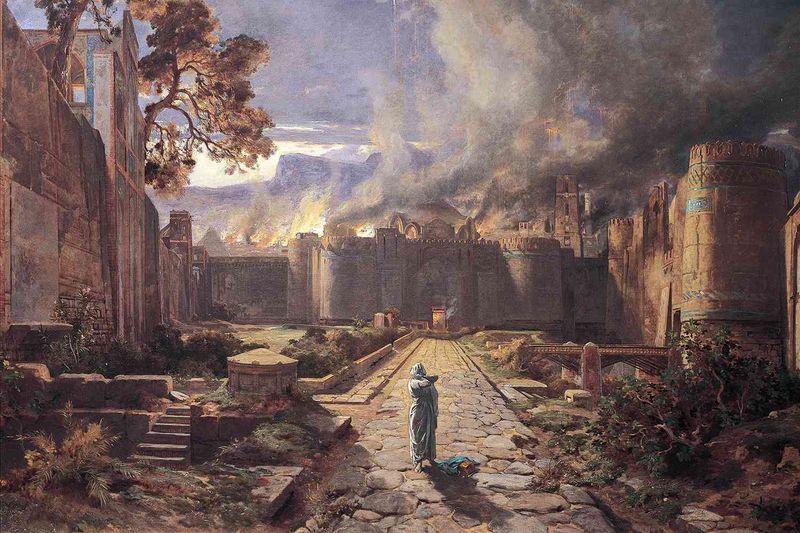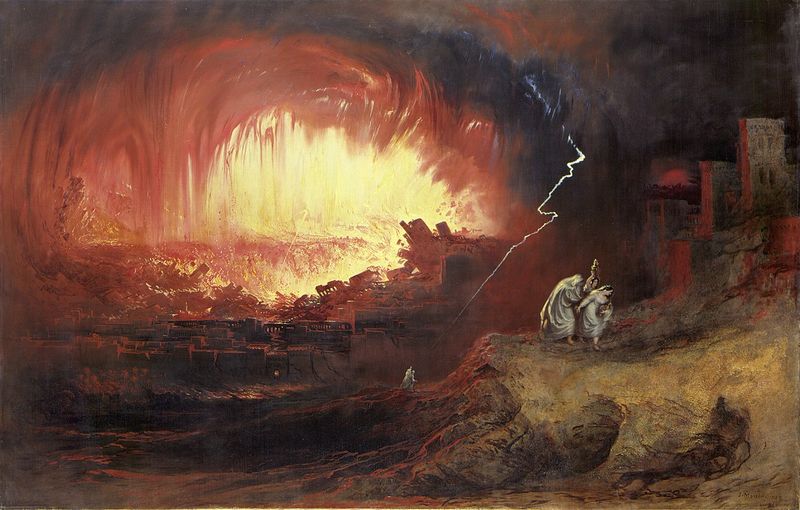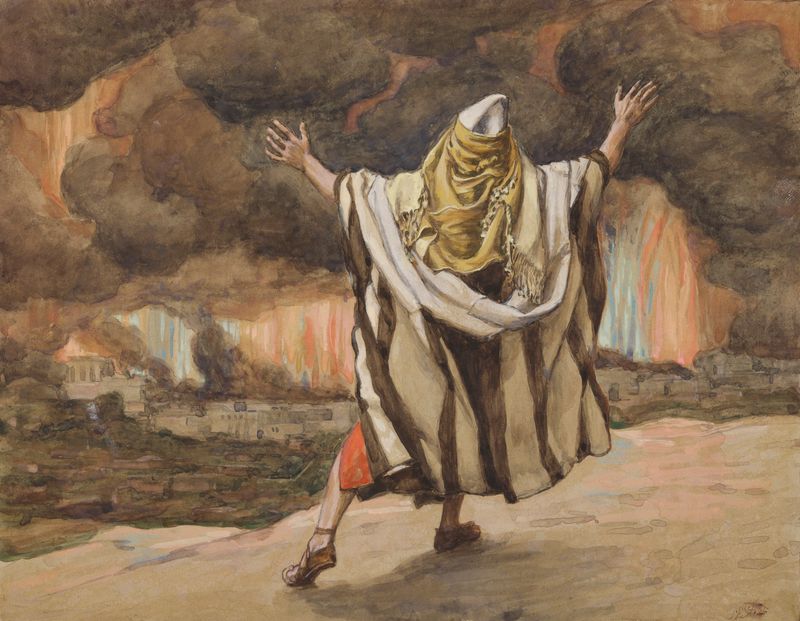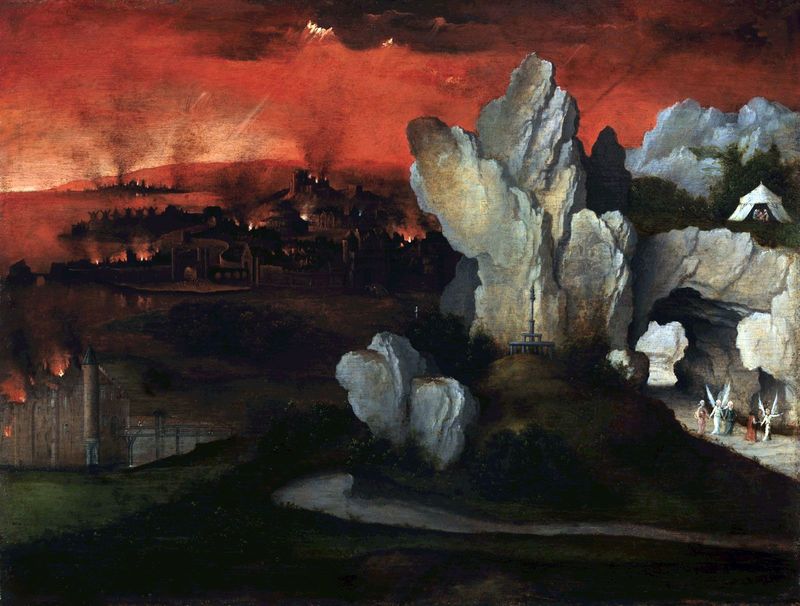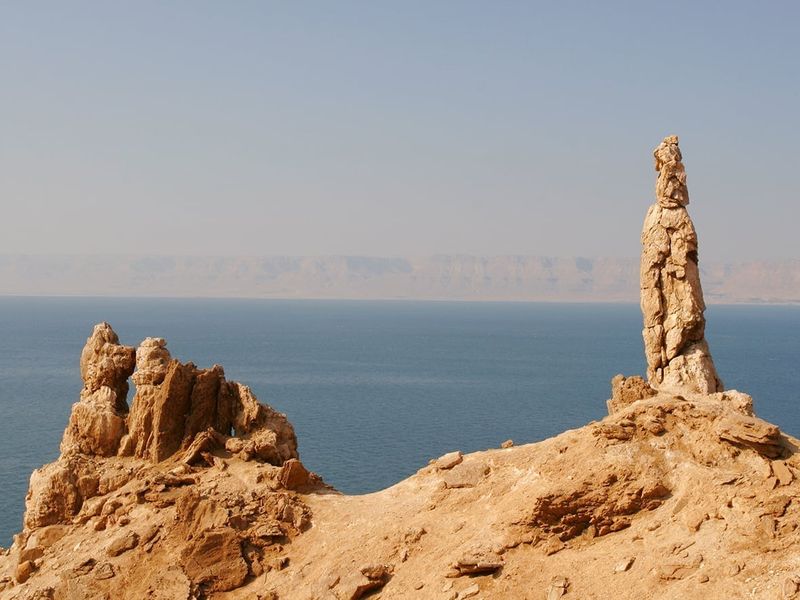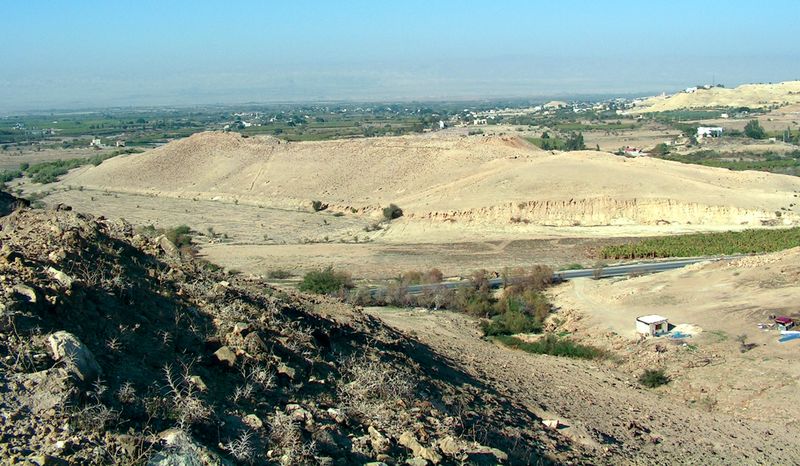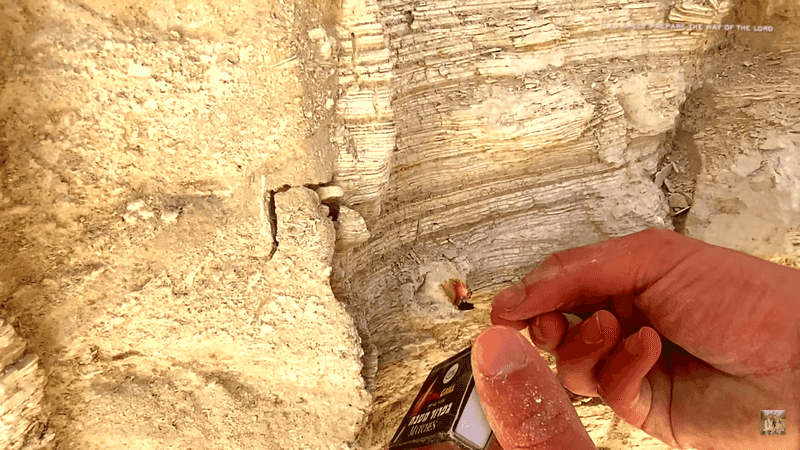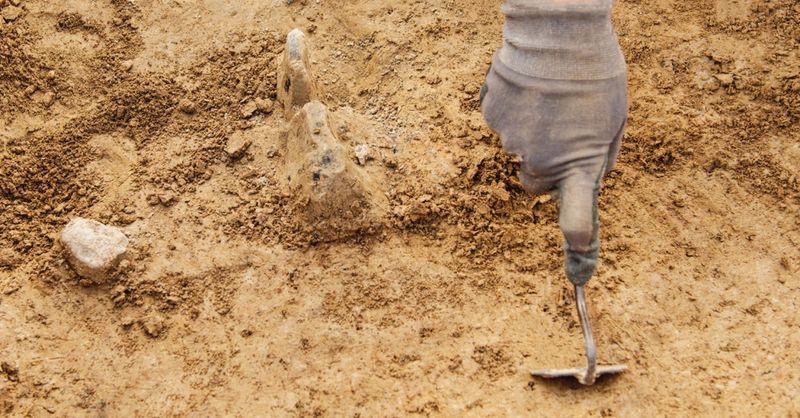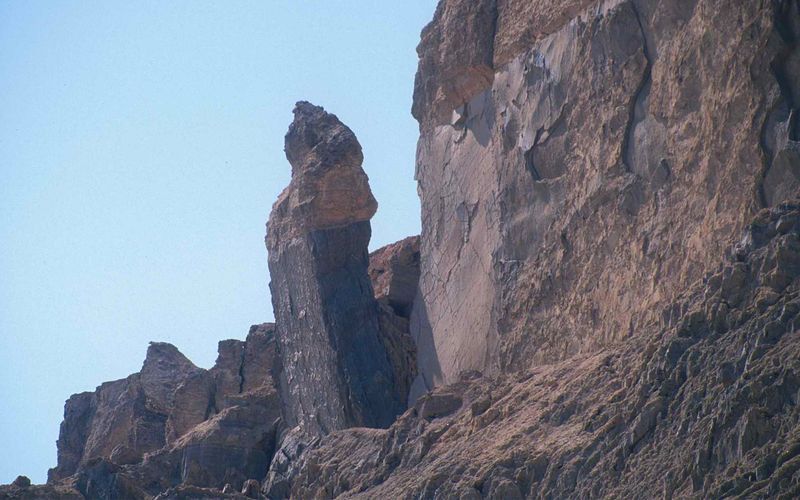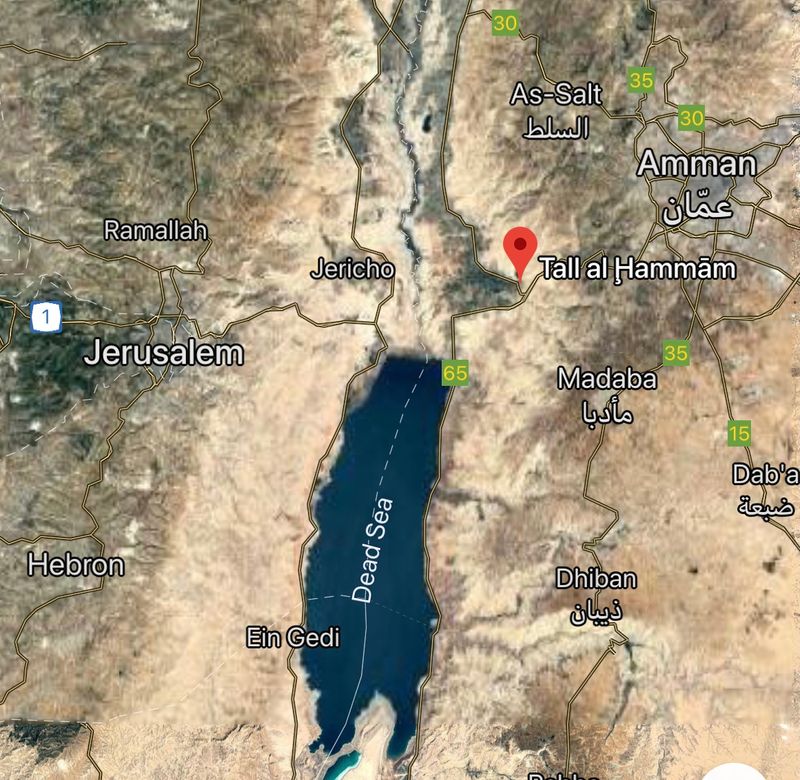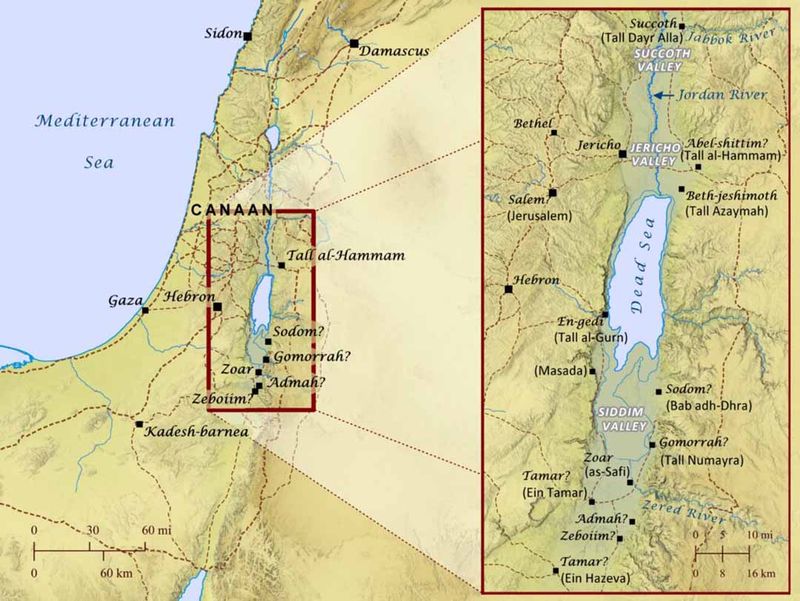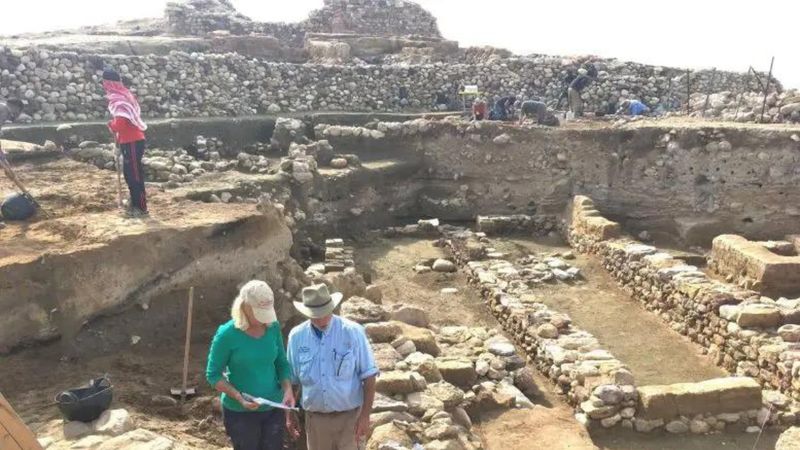Journey into the enigmatic past of Sodom, a city steeped in biblical lore and archaeological intrigue.
Is it merely a myth, or do the ruins whisper truths about divine wrath and ancient catastrophes?
With 15 compelling facts, unravel the mystery surrounding Sodom’s fiery demise and the tantalizing evidence that may confirm its reality.
1. City of Wickedness
Sodom, infamous for its wickedness, is a symbol of ultimate immorality. The Bible vividly describes it as a city rife with sin, so egregious it prompted divine judgment (Genesis 13:13).
This narrative paints Sodom as a place where vice was the norm, engulfing its society in corruption. The city’s moral decay was so profound that it became a benchmark for sin. Sodom’s story serves as a moral lesson against unchecked depravity.
Despite its fertile lands, its ethical barrenness led to its downfall. The city stands as a stark reminder of consequences when morality is forsaken.
2. Lot’s Connection
Lot, Abraham’s nephew, chose the fertile plains of Sodom to settle, unaware of the city’s moral corruption. Genesis 13:10-12 narrates how Lot, seeing the richness of the land, decided to pitch his tents near Sodom.
His choice was driven by the land’s appeal and promise of prosperity. However, the underlying moral decay was not visible from afar. This decision placed Lot and his family in the midst of a city destined for destruction.
Lot’s narrative highlights the perils of making decisions based solely on surface-level appearances and immediate benefits.
3. Abraham’s Plea for Mercy
Abraham’s intercession for Sodom is a poignant biblical account of compassion and justice. In Genesis 18:32, Abraham pleads with God to spare the city if ten righteous individuals can be found.
This narrative underscores the power of negotiation and the belief in justice. Abraham’s dialogue with God reflects a deep concern for human life and the hope that good could prevail.
His plea, however, reveals the city’s total moral collapse, as even ten righteous souls could not be found. This story amplifies the themes of divine justice and mercy interwoven in biblical teachings.
4. Divine Destruction
The destruction of Sodom, as described in Genesis 19:24-25, is one of the most dramatic illustrations of divine wrath. Fire and brimstone rained from the heavens, obliterating the city in a cataclysmic moment.
This event is depicted as a definitive act of divine judgment, leaving no room for redemption. The total annihilation of Sodom is a stark reminder of the biblical principle that actions have consequences.
This narrative serves to illustrate the ultimate price of sin and the power of divine intervention in human affairs, marking a significant moment in biblical history.
5. Lot’s Wife Turned to Salt
The story of Lot’s wife is a haunting tale of disobedience and consequence. As Lot’s family fled the doomed city, she looked back, defying divine command, and was turned into a pillar of salt (Genesis 19:26).
This transformation symbolizes the dangers of longing for a sinful past, despite clear warnings. Her fate is often cited as a lesson in obedience and the peril of disregarding divine instruction.
The image of a lone salt pillar remains a powerful metaphor for the irreversible consequences of a single moment of hesitation and disobedience in the face of divine decree.
6. Sodom’s Infamy
Sodom’s infamy transcends its biblical origins, becoming a global synonym for sin and divine punishment. Even Jesus referenced its fate, emphasizing its notoriety (Matthew 10:15).
This enduring legacy underscores the city’s role as a cautionary tale across cultures and religions. Sodom is often invoked in discussions about morality, serving as a benchmark for ultimate corruption.
Its story is a universal reminder of the potential for divine retribution. By embodying the extreme consequences of immorality, the city’s legacy continues to inform moral discussions to this day, rooted in its historical and religious significance.
7. Total Desolation
The Bible describes Sodom as never being rebuilt after its destruction, symbolizing total desolation (Deuteronomy 29:23). This claim is supported by the barren landscape that reportedly remained uninhabited for centuries.
The site lies as a testament to irreversible devastation, serving as a powerful metaphor for finality. The absence of reconstruction reflects the depth of ruin and the severity of divine judgment.
This enduring desolation reinforces the biblical narrative of complete annihilation, where the city’s past vitality was utterly extinguished, leaving only a cautionary tale of what once was a thriving civilization.
8. Tall el-Hammam Discovery
The Tall el-Hammam site in Jordan is believed by many to be the biblical Sodom. Its location and evidence of sudden destruction align with biblical descriptions.
Archaeologists have uncovered layers of ash, charred remains, and ruined structures, suggesting a catastrophic event. These findings have sparked considerable debate within the archaeological community.
The evidence points towards a significant historical event, possibly corroborating the biblical narrative.
This ongoing exploration continues to fuel discussions about Sodom’s reality, as each discovery at Tall el-Hammam adds layers to our understanding of ancient civilization and its potential biblical connections.
9. Extreme Heat Evidence
Excavations at Tall el-Hammam reveal pottery and bricks subjected to temperatures exceeding 2,000°F (1,093°C), akin to an atomic blast. This evidence suggests a catastrophic event of extraordinary heat.
The discovery of such extreme thermal damage supports theories of a sudden and violent incident. Scientists speculate about the cause, linking it to descriptions of fire and brimstone.
This evidence strengthens arguments for a historical basis to the biblical account. The melted artifacts provide tangible proof of a devastating event, reinforcing the notion that myths of divine retribution may have roots in actual, catastrophic occurrences.
10. Airburst Explosion Theory
Scientists propose a meteorite explosion over the region around 1650 BCE, resembling a Tunguska-like event, aligning with biblical accounts. This theory suggests a firestorm caused by an airburst.
The impact would have caused massive destruction, explaining the sudden demise of Sodom. This hypothesis bridges archaeological findings with the biblical narrative, providing a plausible explanation for the city’s fiery end.
The airburst theory is bolstered by evidence of intense heat and shockwave damage found at the site, aligning with descriptions of divine wrath. This scientific perspective offers a naturalistic explanation for a legendary event.
11. Human Remains with Shock Trauma
Skeletons discovered at Tall el-Hammam exhibit signs of sudden, violent death, supporting theories of a catastrophic event. The remains bear evidence of shock trauma consistent with a disaster.
This adds weight to the hypothesis of a rapid, destructive incident. The condition of these remains offers a chilling glimpse into the past, suggesting that residents faced a sudden, devastating fate.
Such findings deepen our understanding of the disaster’s human impact, aligning with stories of divine intervention. The evidence of trauma provides a poignant reminder of the personal tragedies that underpin tales of city-wide cataclysm.
12. Salt and Sulfur Deposits
The area surrounding the Dead Sea, near Sodom’s supposed location, is rich in salt and sulfur deposits. This geological evidence aligns with the biblical description of fire and brimstone raining upon the city.
These deposits suggest the aftermath of a fiery catastrophe, lending credence to biblical accounts. The prevalence of sulfur nodules in the region points towards a natural phenomenon that could be interpreted as divine retribution.
This geological perspective offers tangible support to the myth, suggesting that ancient stories may have been grounded in observable events, thus bridging the gap between myth and reality.
13. Long-Term Uninhabitable Land
Post-destruction, the land reportedly remained uninhabited for over 600 years, supporting biblical claims of complete devastation. This long-term abandonment suggests significant environmental aftermath.
The uninhabitable nature of the land underscores the severity of the event that destroyed Sodom. Archaeological records indicate that the area was void of settlement, reinforcing the narrative of a city utterly erased from habitation.
This historical desolation serves as a testament to the lasting impact of the catastrophic event, providing a tangible legacy of Sodom’s story and further validating the biblical depiction of its total obliteration.
14. Alignment with Ancient Maps
Historical records and ancient maps, including those from Josephus and medieval cartographers, locate Sodom near the Dead Sea. These documents provide a geographical basis for the city’s existence.
The alignment of these maps with archaeological findings strengthens claims of Sodom’s historical reality. Such records help bridge the gap between myth and history, offering a glimpse into how ancient civilizations understood their world.
The consistency in location across various historical sources suggests a tangible basis for Sodom’s story. These maps enhance our understanding of ancient geography and its role in biblical narratives.
15. Geological Activity & Destruction
Some researchers suggest that geological activity, including earthquakes and resultant fires, could have contributed to Sodom’s destruction. This theory proposes natural disasters as harbingers of divine intervention.
The region’s seismic activity is well-documented, aligning with the possibility of an earthquake triggering widespread fires. This perspective offers a natural explanation for the biblical account of fiery destruction, linking it to observable, historical phenomena.
By considering geological factors, this theory enriches our understanding of how natural events may have been perceived as acts of divine judgment, providing insight into the interplay between myth and reality.

